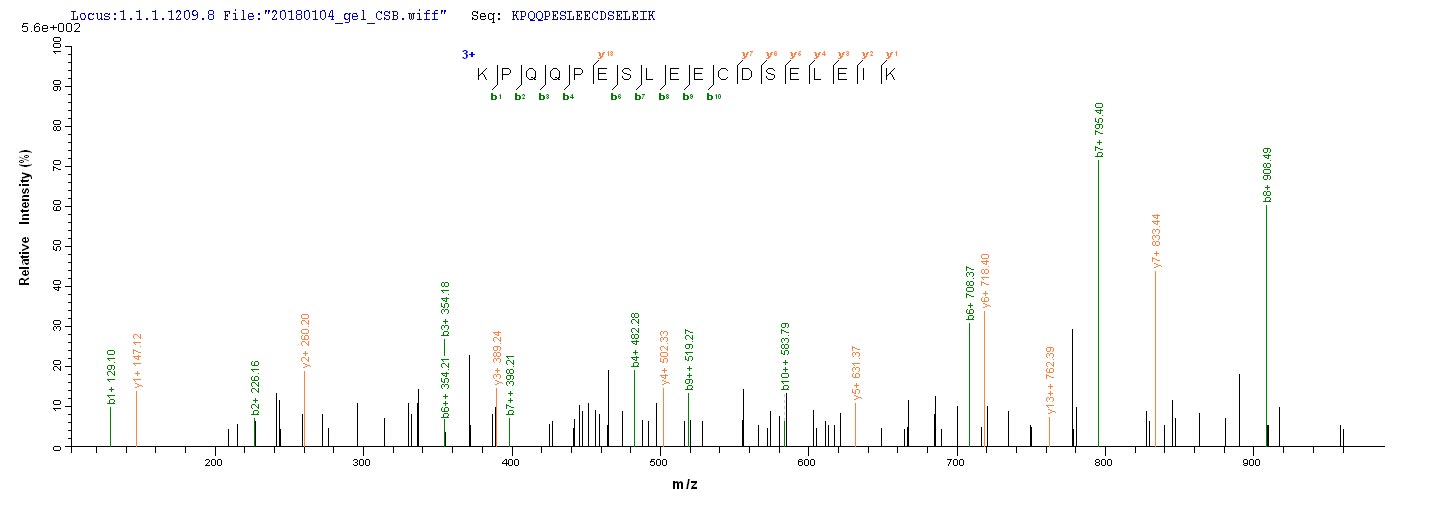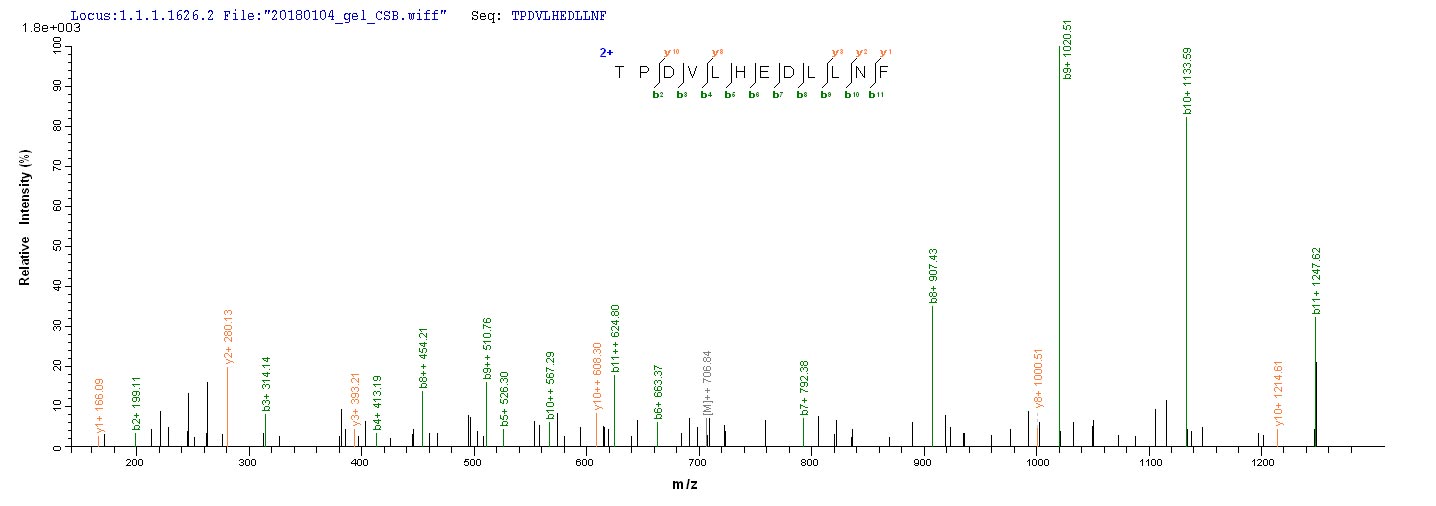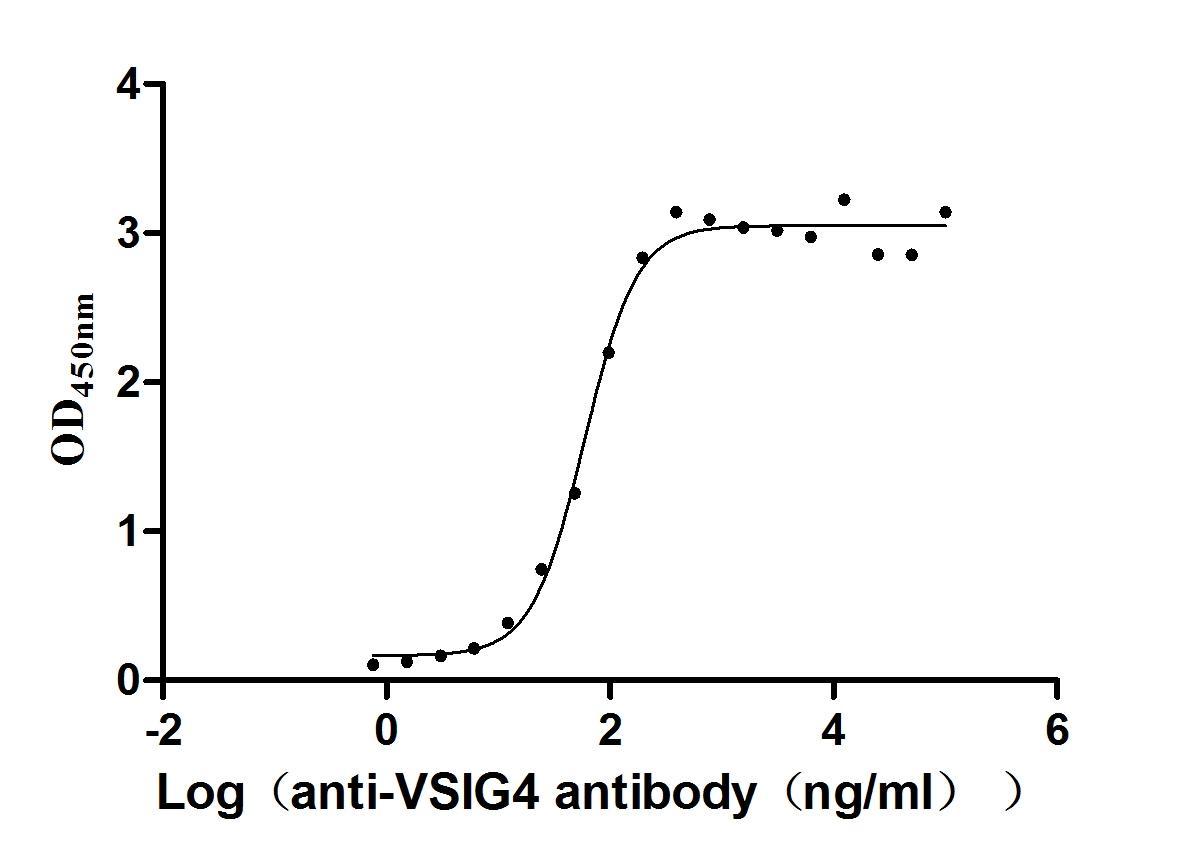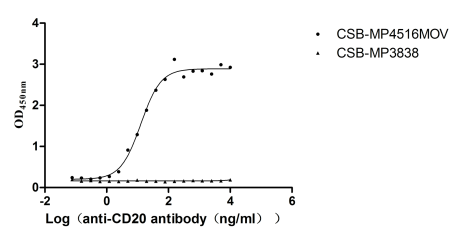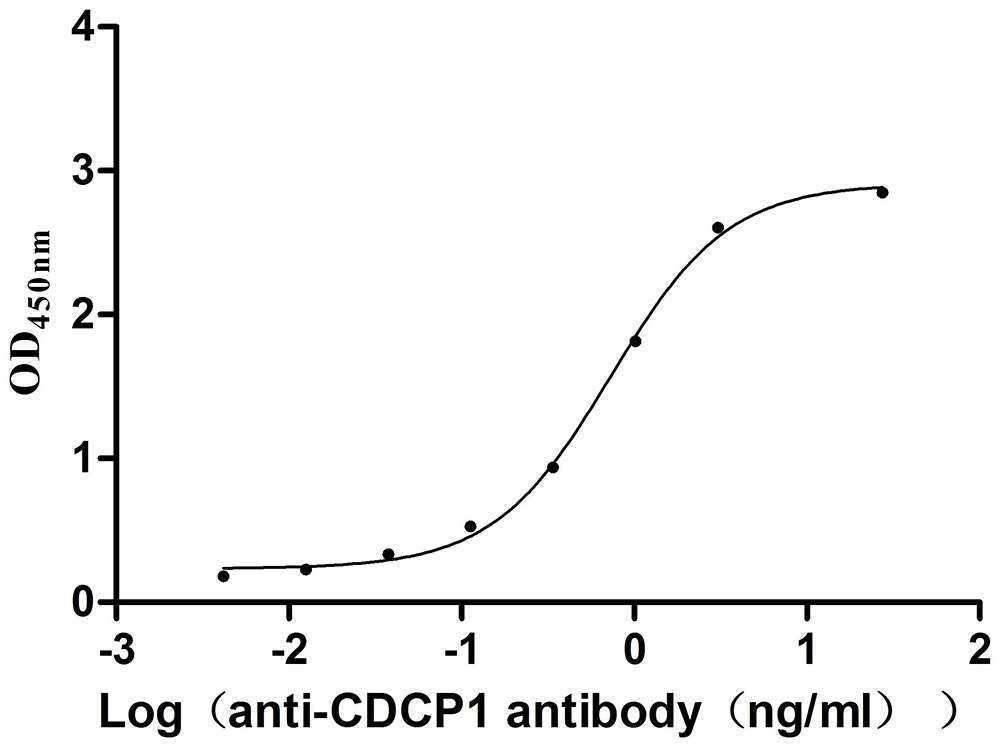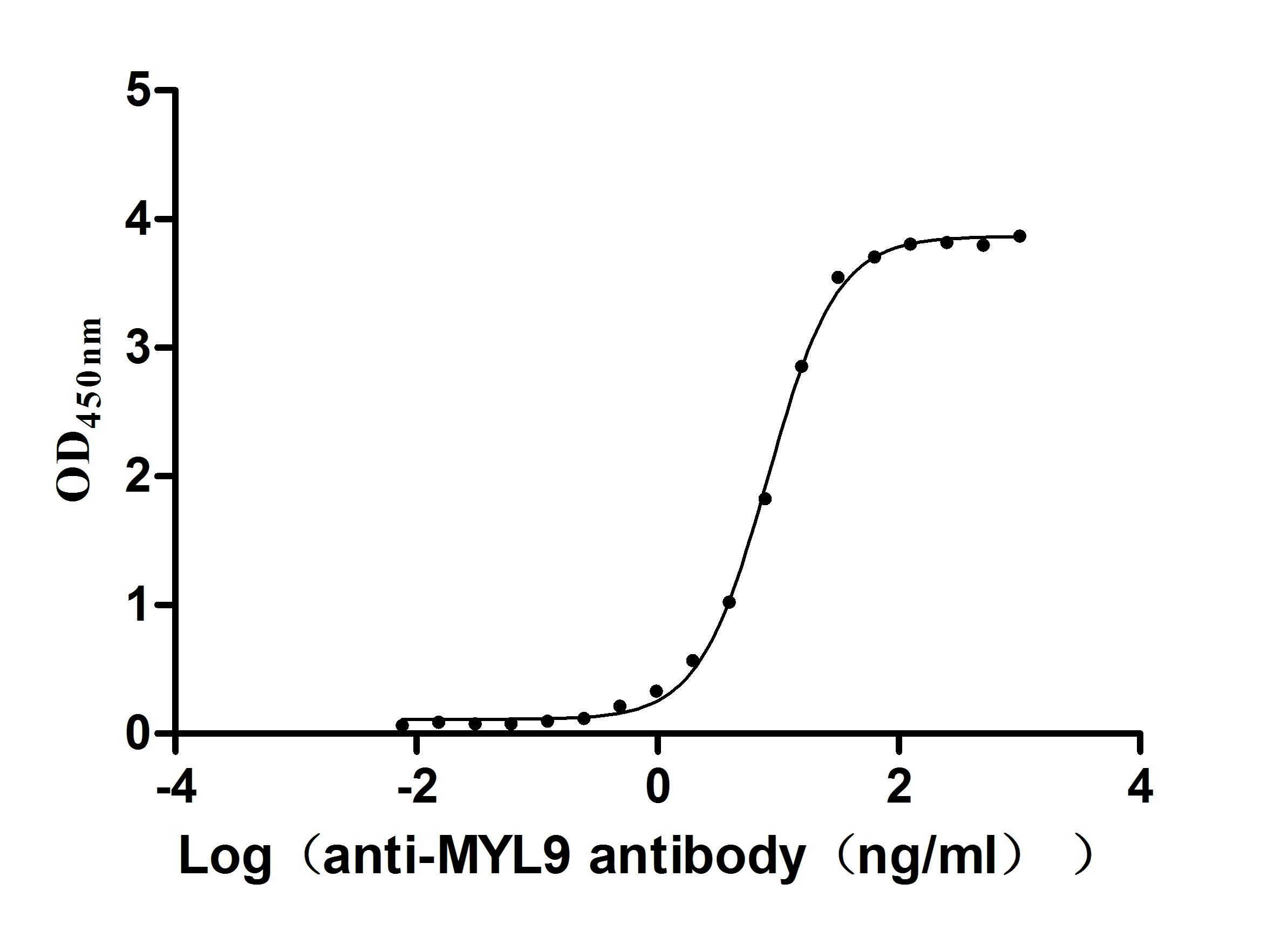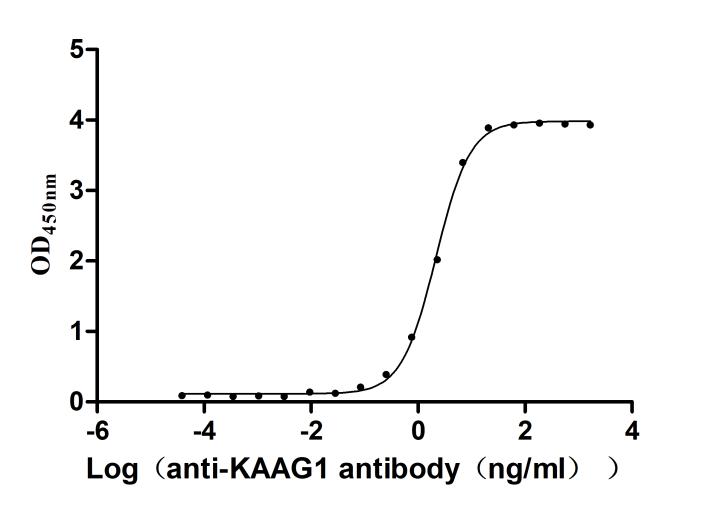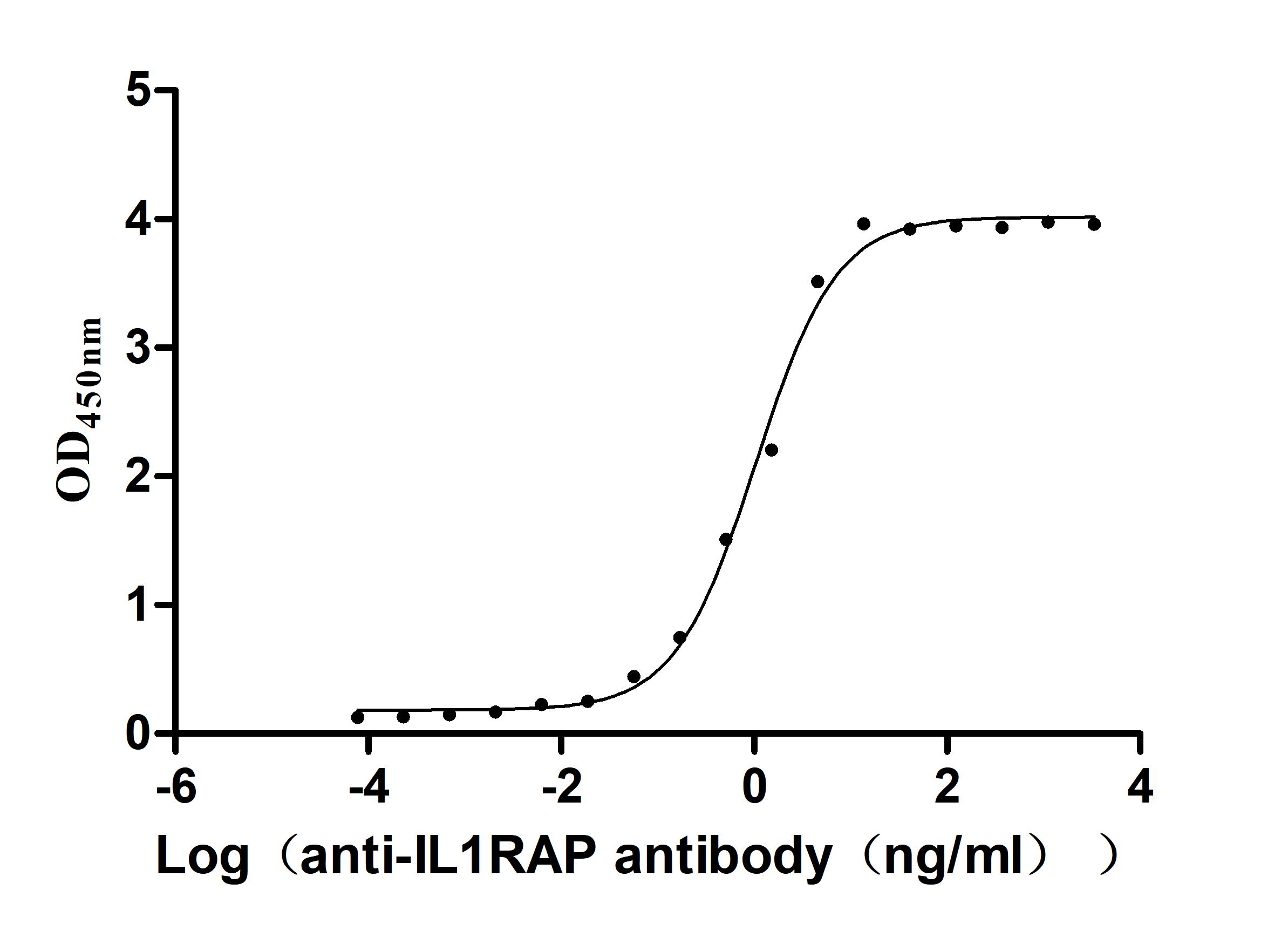Recombinant Epstein-Barr virus Lytic switch protein BZLF1 (BZLF1)
In Stock-
中文名稱:Recombinant Epstein-Barr virus Lytic switch protein BZLF1(BZLF1)
-
貨號:CSB-EP355980EFA
-
規(guī)格:¥2328
-
圖片:
-
(Tris-Glycine gel) Discontinuous SDS-PAGE (reduced) with 5% enrichment gel and 15% separation gel.
-
Based on the SEQUEST from database of E.coli host and target protein, the LC-MS/MS Analysis result of CSB-EP355980EFA could indicate that this peptide derived from E.coli-expressed Epstein-Barr virus (strain B95-8) (HHV-4) (Human herpesvirus 4) BZLF1.
-
Based on the SEQUEST from database of E.coli host and target protein, the LC-MS/MS Analysis result of CSB-EP355980EFA could indicate that this peptide derived from E.coli-expressed Epstein-Barr virus (strain B95-8) (HHV-4) (Human herpesvirus 4) BZLF1.
-
-
其他:
產(chǎn)品詳情
-
純度:Greater than 90% as determined by SDS-PAGE.
-
基因名:BZLF1
-
Uniprot No.:
-
別名:BZLF1; Trans-activator protein BZLF1; EB1; Zebra
-
種屬:Epstein-Barr virus (strain B95-8) (HHV-4) (Human herpesvirus 4)
-
蛋白長度:Full Length
-
來源:E.coli
-
分子量:42.9kDa
-
表達(dá)區(qū)域:1-245aa
-
氨基酸序列MMDPNSTSEDVKFTPDPYQVPFVQAFDQATRVYQDLGGPSQAPLPCVLWPVLPEPLPQGQLTAYHVSTAPTGSWFSAPQPAPENAYQAYAAPQLFPVSDITQNQQTNQAGGEAPQPGDNSTVQTAAAVVFACPGANQGQQLADIGVPQPAPVAAPARRTRKPQQPESLEECDSELEIKRYKNRVASRKCRAKFKQLLQHYREVAAAKSSENDRLRLLLKQMCPSLDVDSIIPRTPDVLHEDLLNF
Note: The complete sequence including tag sequence, target protein sequence and linker sequence could be provided upon request. -
蛋白標(biāo)簽:N-terminal 6xHis-SUMO-tagged
-
產(chǎn)品提供形式:Liquid or Lyophilized powder
Note: We will preferentially ship the format that we have in stock, however, if you have any special requirement for the format, please remark your requirement when placing the order, we will prepare according to your demand. -
緩沖液:Tris-based buffer,50% glycerol
-
儲存條件:Store at -20°C/-80°C upon receipt, aliquoting is necessary for mutiple use. Avoid repeated freeze-thaw cycles.
-
保質(zhì)期:The shelf life is related to many factors, storage state, buffer ingredients, storage temperature and the stability of the protein itself.
Generally, the shelf life of liquid form is 6 months at -20°C/-80°C. The shelf life of lyophilized form is 12 months at -20°C/-80°C. -
貨期:3-7 business days
-
注意事項:Repeated freezing and thawing is not recommended. Store working aliquots at 4°C for up to one week.
-
Datasheet & COA:Please contact us to get it.
相關(guān)產(chǎn)品
靶點(diǎn)詳情
-
功能:Plays a key role in the switch from latent infection to lytic cycle producing new virions. Acts as a transcription factor, inducing early lytic cycle genes, and as a origin binding protein for genome replication. BZLF1 activates the promoter of another EBV gene (BSLF2+BMLF1).
-
基因功能參考文獻(xiàn):
- position C189 in Zta impacts sequence-specific binding to DNA containing modified and unmodified cytosine. PMID: 29772230
- ERK/c-Jun recruits Tet1 to Induce Zta expression and Epstein-Barr virus reactivation through DNA demethylation. PMID: 27708396
- HIF-1alpha directly bound the promoter of the EBV primary latent-lytic switch BZLF1 gene, Zp, activating transcription via a consensus hypoxia-response element (HRE) located at nt -83 through -76 relative to the transcription initiation site. PMID: 28617871
- By CRISPR/Cas9-induced inactivation of TLR9, MyD88, IRAK4 and IRAK1 we confirm that BZLF1 repression is dependent on functional TLR9 and MyD88 signaling, and identify IRAK4 as an essential element for TLR9-induced repression of BZLF1 expression upon BCR cross-linking PMID: 29088270
- Comparison of how AP-1 (Jun/Jun dimer) and Epstein-Barr virus Zta recognize methyl groups within their cognate response elements PMID: 28158710
- Binding of PARP1 at the BZLF1 lytic switch promoter restricts Epstein Barr Virus reactivation. PMID: 28456021
- These results suggest that lytic Epstein-Barr virus infection attenuates the transmission of inflammatory paracrine senescence through BZLF1 downregulation of TNF-alpha secretion and alters the inflammatory microenvironment to allow virus propagation and persistence. PMID: 27334596
- The dimerization region of Epstein-Barr virus Zta is not required to mediate host CIITA repression. PMID: 26653871
- These results suggest that Epstein-Barr Virus BZLF1 attenuates the proinflammatory responses to facilitate viral replication. PMID: 26537683
- Presented is a model of DNA damage responses activation during the EBV lytic cycle in which ZEBRA induces ATM kinase phosphorylation, in a DNA binding dependent manner, to modulate gene expression. PMID: 25950714
- RanBPM was found to enhance Zta-dependent transcriptional activity via the inhibition of Zta sumoylation. PMID: 25900136
- Studied the effects of BZLF1 on cellular response to DNA damage in nasopharyngeal carcinoma cells. PMID: 26006018
- This is the first report to characterize BZLF1 gene polymorphisms in paediatric patients from our geographical region and to suggest the association of these polymorphisms with malignant lymphomas. PMID: 24666405
- ZEBRA and BGLF5 each function as viral host shutoff factors. PMID: 24705134
- these results indicate a critical role for MCAF1 in AP-1-dependent Rta activation of BZLF1 transcription. PMID: 24598729
- Performed the recombinant production of a biologically active Epstein-Barr virus BZLF1 trans-activator, i.e., Z-encoded broadly reactive activator (ZEBRA), that recognized specific DNA motifs. PMID: 24291446
- B-cell specific transcription factor, Oct-2, inhibits the function of the viral immediate-early protein, BZLF1, and prevents lytic viral reactivation. PMID: 22346751
- the genetic characteristics of BZLF1 gene and its promoter Zp of the epidemic strains in children with primary Epstein-Barr virus (EBV)-associated diseases PMID: 24772891
- TAF-Ibeta promotes BZLF1 expression and subsequent lytic infection by affecting chromatin at the BZLF1 promoter PMID: 23691099
- Mutation of MEF2 sites severely impaired both spontaneous and induced expression of not only BZLF1, but also BRLF1 in comparison to wild-type or revertant virus cases. PMID: 23843637
- The B-cell-specific transcription factor and master regulator Pax5 promotes Epstein-Barr virus latency by negatively regulating the viral immediate early protein BZLF1. PMID: 23678172
- Zta drives cell migration and invasion through MMPs PMID: 23409137
- BZLF1 is a pioneer factor that reverses epigenetic silencing of viral DNA to allow escape from latency. PMID: 22969425
- Genome-wide analyses of Zta binding to the Epstein-Barr virus genome reveals interactions in both early and late lytic cycles and an epigenetic switch leading to an altered binding profile. PMID: 23015699
- The mechanism of p53-mediated Epstein-Barr viral Zta protein activation requires the cooperative action of another cellular factor, Sp1. PMID: 22711357
- Herpes simplex virus type 1 induces the reactivation of latent EBV by triggering BZLF1 expression. PMID: 22188237
- Epigenetic modification of the BZLF1 promoter in latent Raji cells by histone H3 lysine 27 trimethylation (H3K27me3), H3K9me2/me3, and H4K20me3. PMID: 22357272
- The authors show that expression of the Epstein-Barr virus immediate-early protein BZLF1 is restricted to Blimp1-positive epithelial cells in oral hairy leukoplakia. PMID: 22278826
- The abundance of Zta protein coupled with the methylation status of the Epstein-Barr virus (EBV) genome act together to co-ordinate the expression of lytic cycle genes at the majority of EBV promoters. PMID: 22022468
- conclude that TGF-beta induces EBV lytic reactivation via the canonical Smad pathway by activating BZLF1 gene expression through multiple SBEs acting in concert PMID: 21593157
- study reports that specific single missense mutations within the basic domain of ZEBRA induce the formation of nuclear aggresomes, which strongly sequester the mutant protein PMID: 21233201
- The authors conclude that the ZIIR element is a potent silencing element in the BZLF1 promoter Zp and plays a key role in establishment and maintenance of virus latency by inhibiting activation of Zp through the PKC signal transduction pathway. PMID: 21389123
- This study also reveals that the interaction between Zta and Ku80 involves the C-terminal region of Zta and the 425 aa N-terminal region of Ku80. PMID: 21123545
- Data show that Daudi cells express glucocorticoid receptors that mediate Dex-dependent up-regulation of BZLF1 mRNA levels. PMID: 20466055
- By a chromatin immunoprecipitation (ChIP) assay, the authors show that Ubn-1 blocks EB1-human herpesvirus 4 DNA interaction. PMID: 21084479
- These observations indicate that the EBV lytic transactivator protein Zta displays activity consistent with a pathogenic role in pulmonary fibrosis associated with herpesvirus infection. PMID: 20817778
- Results strongly suggest that oxidative stress contributes to the reactivation of EBV lytic cycle, through induction of BZLF-1 gene expression. PMID: 19898754
- Enhanced binding of ZEBRA to the origin of lytic DNA replication is crucial for lytic viral DNA replication. PMID: 20808903
- Data propose that EBV protein Zta activates SOCS3 protein as an immune escape mechanism that both suppresses optimal IFNalpha secretion by human monocytes and favors a state of type I IFN irresponsiveness in these cells. PMID: 20689596
- sumoylation of BZLF1 regulates its transcriptional activity through histone modification during Epstein-Barr virus productive replication PMID: 20516063
- Study renders ZEBRA-MD a promising candidate for therapeutic protein delivery applications. PMID: 20385549
- These data suggest that Zta acts by inducing and/or stabilizing a DNA hairpin structure during productive infection. PMID: 20444899
- viral BZLF1 protein is crucial both to establish latency and to escape from it; Epstein Barr virus has evolved to its host mode of dna methylation. PMID: 20080764
- Our work implies that the balance of promyelocytic leukemia protein and BZLF1 levels in cells may affect how each protein functions. PMID: 16307818
- there are three phosphorylation sites on the Epstein-Barr virus ZEBRA protein PMID: 16321978
- Results describe the crystal structure of ZEBRA's DNA binding domain bound to an Epstein-Barr virus lytic gene promoter element. PMID: 16483937
- Comparison among viral orthologues of Zta suggest that a conserved N-terminal extension of the consensus B-ZIP domain is required for this multivalent DNA recognition capacity of Zta and is essential for viral reactivation.[Zta] PMID: 16971443
- BZLF1 is expressed as an immediate-early gene following primary EBV infection of B lymphocytes. PMID: 17079287
- We report that the plasma cell differentiation factor, XBP-1s, activates the expression of the master regulator of EBV lytic activation, BZLF1. PMID: 17898050
- HHV8-RTA and EBV-BZLF1 are co-localized and physically interact with each other in dually-infected PELs, required for the mutual inhibition of the two molecules PMID: 18253508
顯示更多
收起更多
-
亞細(xì)胞定位:Host nucleus.
-
蛋白家族:BZIP family
-
數(shù)據(jù)庫鏈接:
KEGG: vg:3783744
Most popular with customers
-
Recombinant Human T-cell immunoreceptor with Ig and ITIM domains (TIGIT), partial (Active)
Express system: Mammalian cell
Species: Homo sapiens (Human)
-
Recombinant Human V-set and immunoglobulin domain-containing protein 4 (VSIG4), partial (Active)
Express system: Mammalian cell
Species: Homo sapiens (Human)
-
Recombinant Macaca fascicularis Membrane spanning 4-domains A1 (MS4A1)-VLPs (Active)
Express system: Mammalian cell
Species: Macaca fascicularis (Crab-eating macaque) (Cynomolgus monkey)
-
Recombinant Human Tumor-associated calcium signal transducer 2 (TACSTD2), partial (Active)
Express system: Mammalian cell
Species: Homo sapiens (Human)
-
Recombinant Mouse CUB domain-containing protein 1 (Cdcp1), partial (Active)
Express system: Mammalian cell
Species: Mus musculus (Mouse)
-
Recombinant Human Myosin regulatory light chain 12B(MYL12B) (Active)
Express system: E.coli
Species: Homo sapiens (Human)
-
Recombinant Human Kidney-associated antigen 1(KAAG1) (Active)
Express system: E.coli
Species: Homo sapiens (Human)
-
Recombinant Macaca fascicularis Interleukin 1 receptor accessory protein(IL1RAP), partial (Active)
Express system: Mammalian cell
Species: Macaca fascicularis (Crab-eating macaque) (Cynomolgus monkey)


